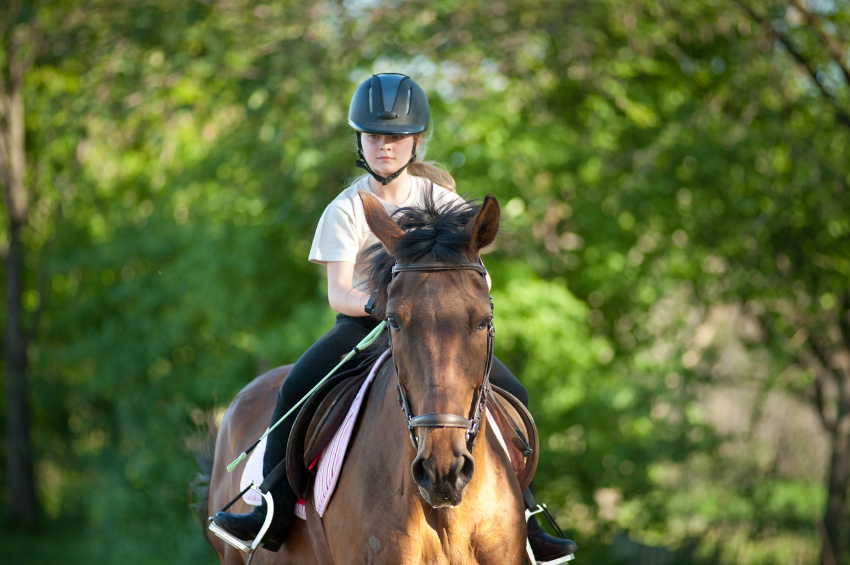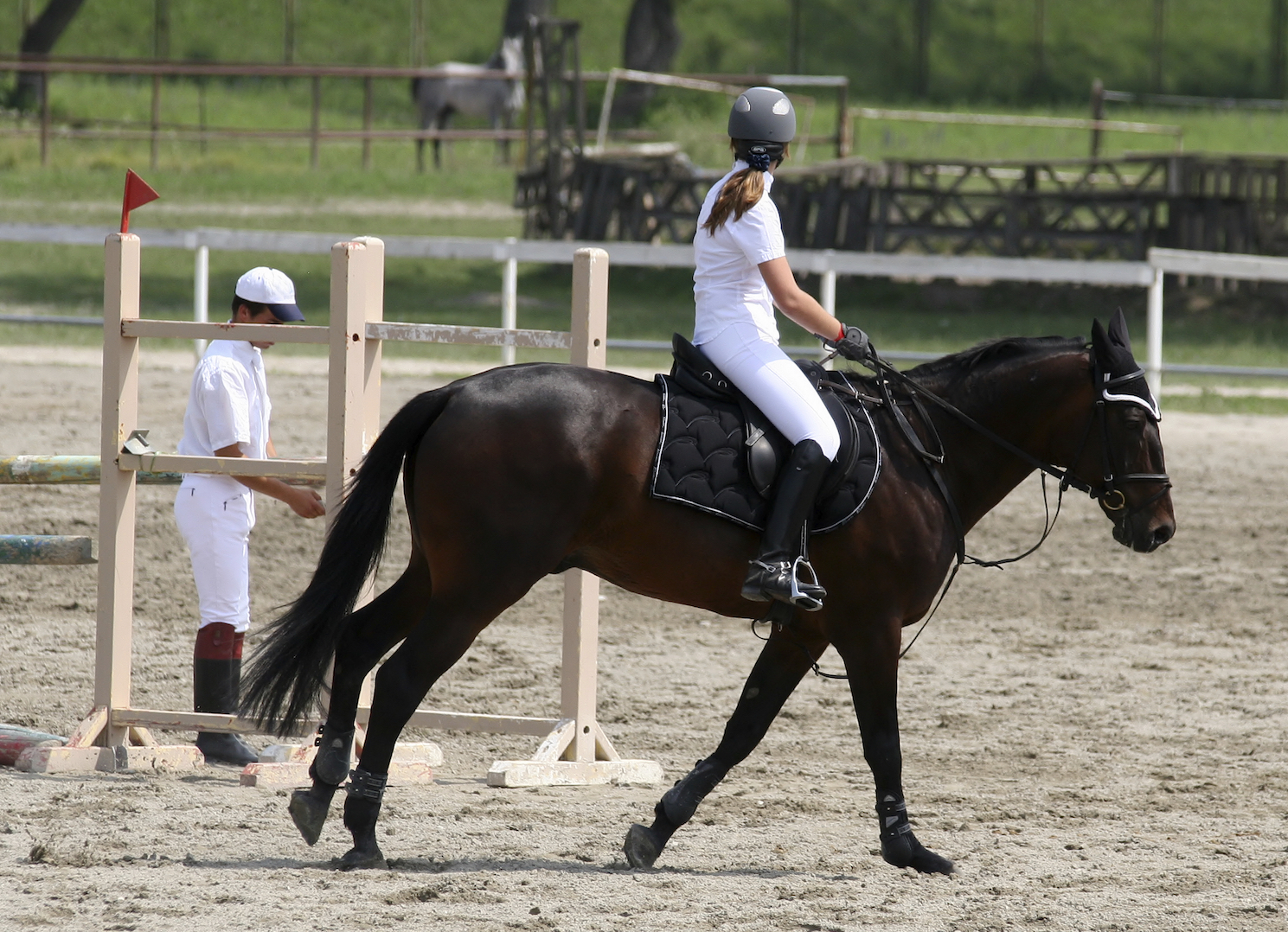Outfitting yourself or your child for riding lessons can be a daunting task; equipment can be expensive and you might not know what’s necessary and what’s not. Here’s my list of the essentials, and why they’re so important.
Helmet: Most instructors are fine if you bring a bike helmet for your first lessons, just make sure it fits correctly
Boots with a heel: The heel is important, it keeps your foot from sliding forward through the stirrup. If you ride in a western saddle your boots should pull off, not lace or zip up. Western stirrups don’t break away or pull off the saddle, so if you fall off you’ll need your boot to pull off your foot so you don’t get dragged. English stirrups can pull off the saddle, and some instructors even use “safety stirrups” (see photo at top of post) that can break apart, so it’s okay to wear lace up or zip up boots.
Gloves: Yes, even in the summer! Reins can quickly rub sore spots and blisters on hands, especially if the lesson horse or pony tries to pull for grass. Gloves make a big difference in the comfort of the rider, especially for children.
Long pants: Long pants prevent pinching or rubbing from the saddle. Cotton leggings are a great, affordable option. they don’t add bulk or rub. FYI, riding tights are basically leggings with grippy knee patches. And no grippy knee patches means the rider has to balance better on her own. Even if you’re 6 year-old is a girly-girl, please encourage her to wear pants or leggings, even if she insists on wearing a skirt over the top.
Extras: A water bottle and sunscreen are both a good idea. You might want to bring treats for your pony, but before you do ask your instructor if you can and what treats they allow. Don’t be surprised if the instructor says no—a lot of people don’t like rewarding their horses with food, it can make them mouthy and more likely to bite.
Finally, expect that you will get dirty. Even the nicest facility will have dust and manure. Don’t bring anything to the barn that you can’t get stained.


